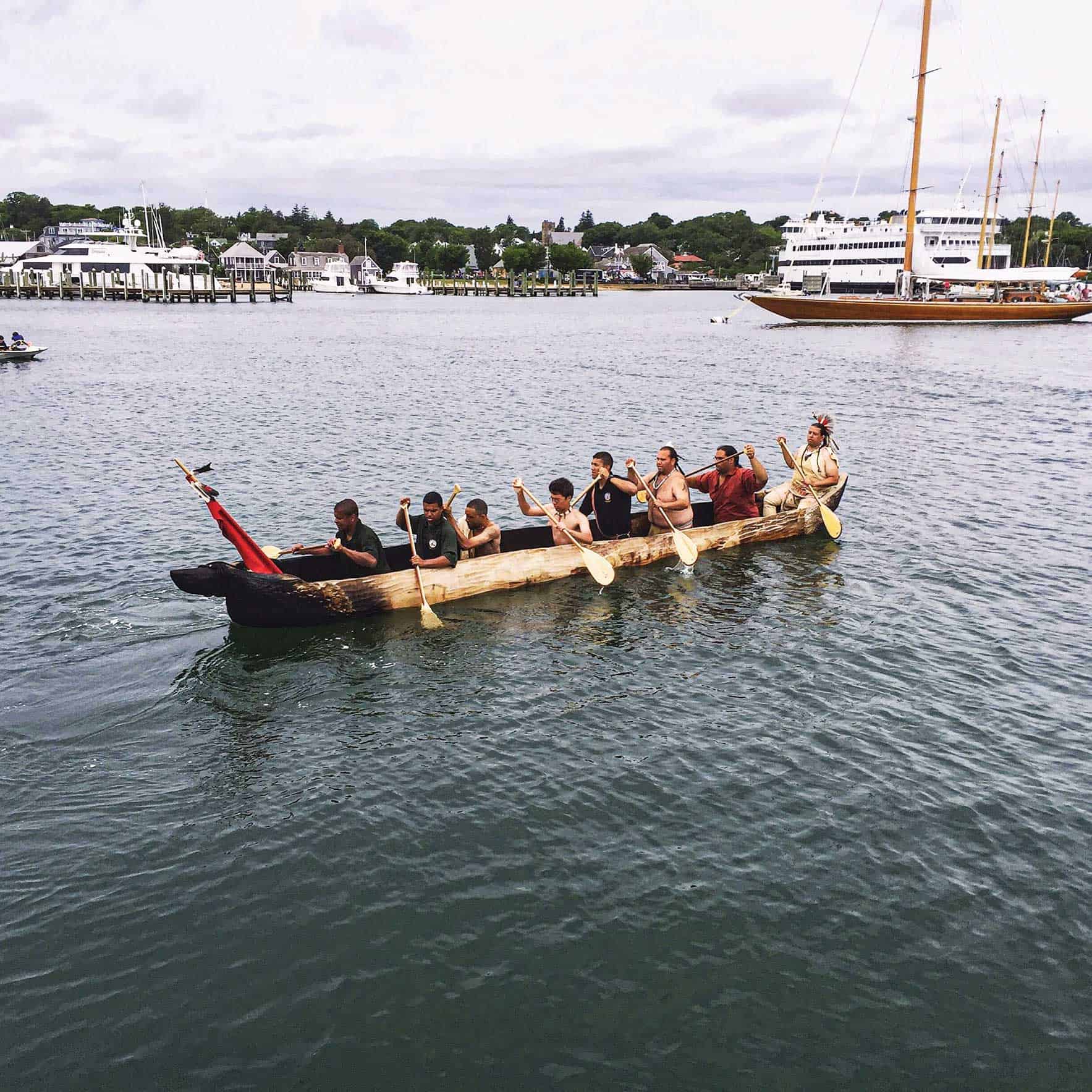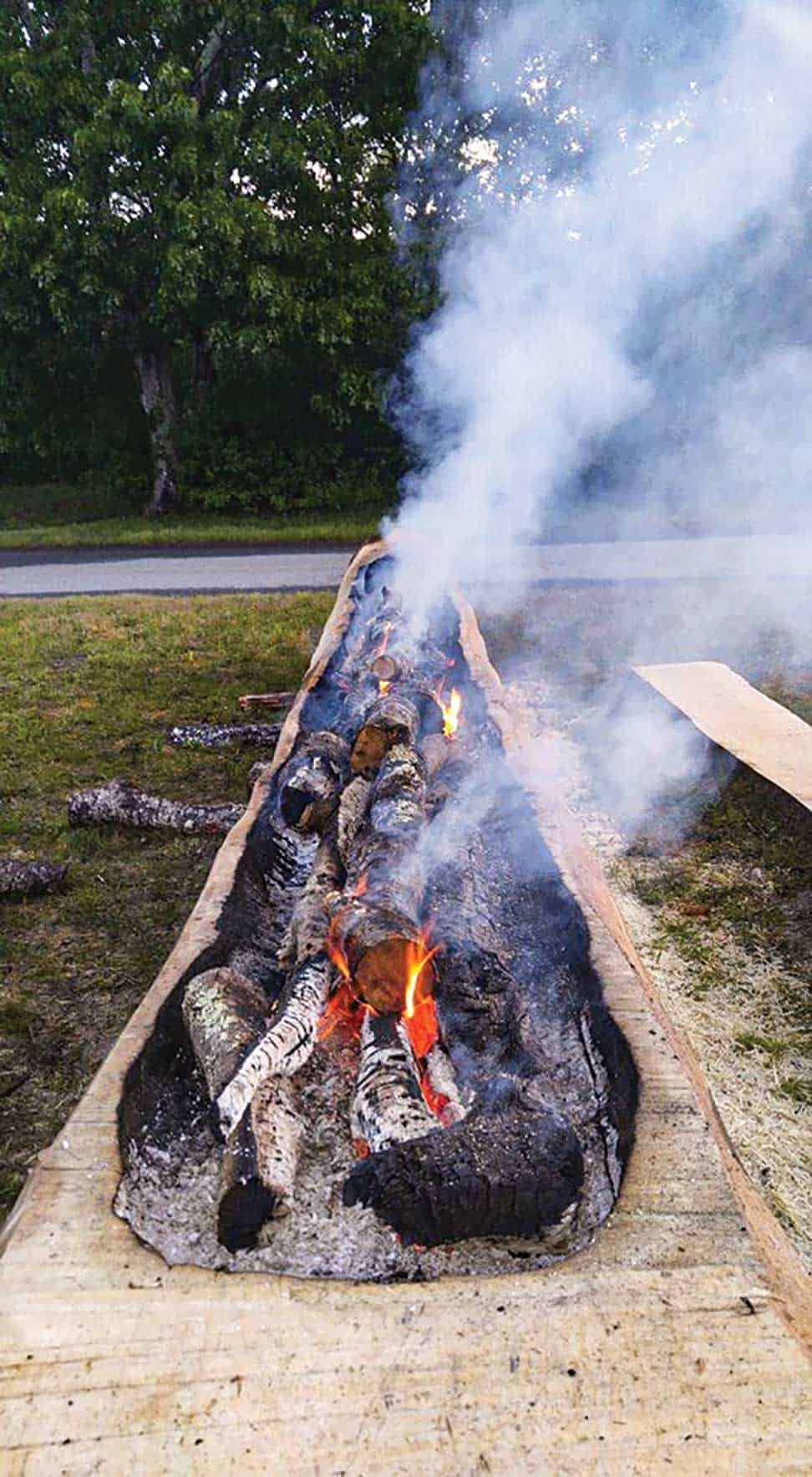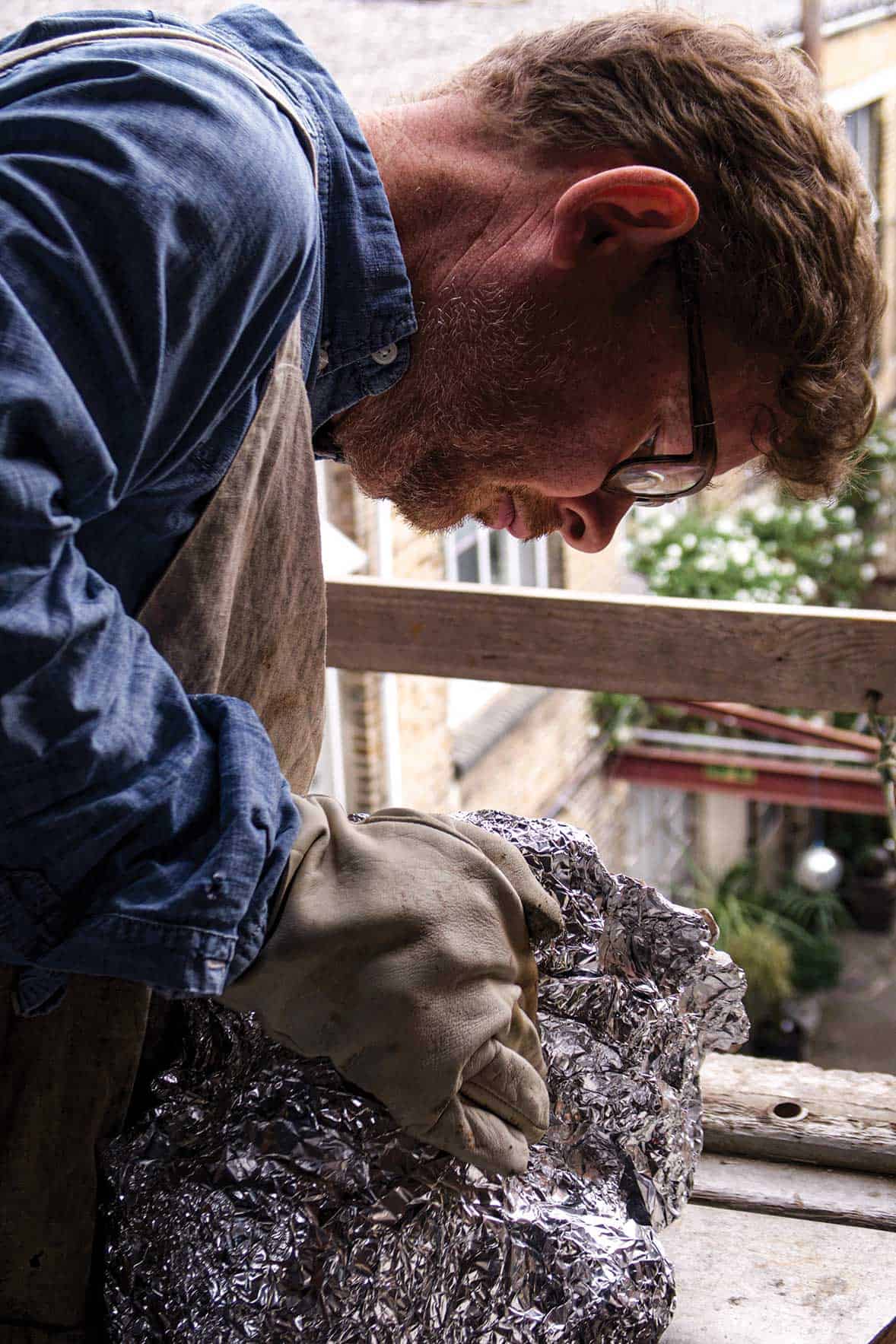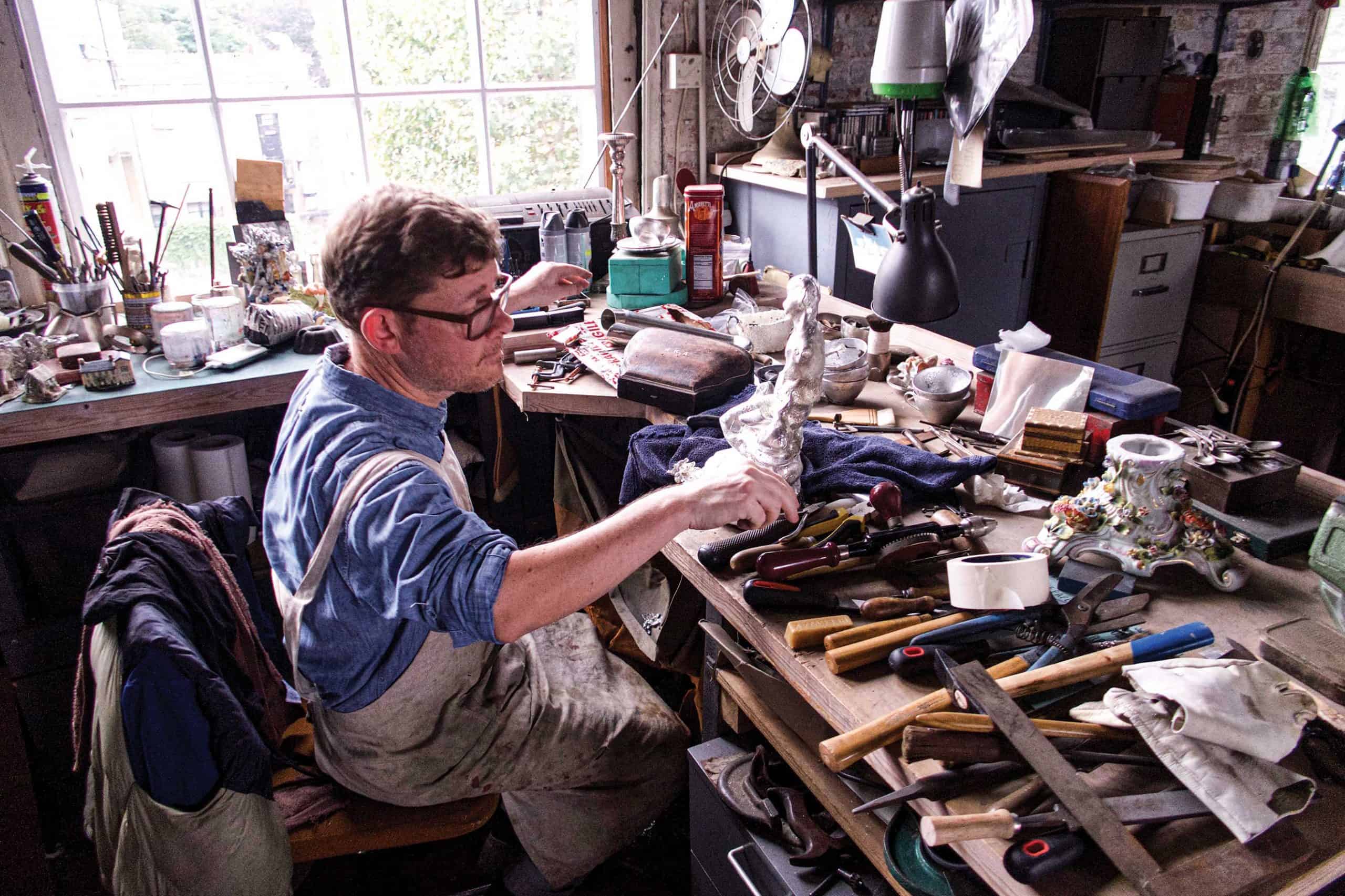Artisans from both sides of the Atlantic come together to create works inspired by the Mayflower voyage.
Written by Lisa Cavanaugh
Michelle Erickson is a scholar and celebrated ceramist whose work involves deep research into historical techniques. This interest was sparked early on by her exposure to Native American, Asian, British, and other European pottery unearthed in the “historic triangle” of Williamsburg, Jamestown, and Yorktown, Virginia. Through her command of colonial-era ceramic methods, Erickson crafts contemporary recreations—sometimes even direct replicas—of 17th and 18th century objects.
Art curator Glenn Adamson’s understands that his latest project, presented by Fuller Craft Museum in Brockton, is likely to give rise to conversations about the cultural and historical significance of the 400th anniversary of the Mayflower’s arrival in Plymouth, Massachusetts. The exhibition, “Another Crossing: Artists Revisit the Mayflower Voyage,” was developed through a partnership between Fuller Craft Museum, Plymouth College of Art, and The Box (previously referred to as the Plymouth History Centre) in Plymouth, England. The multi-institutional collaboration explores the themes of immigration, exploration and innovation.
“Another Crossing captures the complexity of migration,” says Adamson, a senior scholar at Yale Center for British Art. “The artists chosen to participate were given the responsibility of saying something profound about an event that has thorny ethical issues.”
“The voyage of the Mayflower was a significant point in history and often this story is told through a single lens,” says Denise Lebica, director of Fuller Craft Museum. “It was essential to the partners in this project that this story be shared through multiple perspectives—Native American, English, Dutch and non-native American—and artists were chosen who reflected each demographic and viewpoint. “
Ten artists were selected and presented with several artistic challenges. The first was the parameter of using only 17th-century materials and processes. The second was the authorship of the narrative. “It turned out that the Native American participants were most at ease with this story, as they have had to live with it their whole careers,” says Adamson.
Jonathan James Perry is a practitioner of various Wampanoag craft and art techniques, particularly in the areas of stone and woodcarving. His deep respect for such practices comes from a reverence for his own heritage and the knowledge of his ancestors; his work explores changes in the natural world, as well as the realities of living in 21st-century society. Perry’s art weaves together Wampanoag stories and symbols, particularly the imagery and experience of being near the ocean. He has also spent the last 25 years working as a dancer, singer and speaker.
To inspire their work and provide scholarly and technical information, the artists and project partners participated in two immersive research trips last year, one to Plymouth, England and the other to Plymouth, Massachusetts. American ceramicist Michelle Erickson, whose specialty is the rediscovery of 17th and 18th-century ceramic techniques, appreciated the chance to gain firsthand exposure to both Wampanoag and Pilgrim history while visiting Plymouth, Massachusetts. She attended sessions on quillwork and pottery with Wampanoag artist Kerri Helme, wampum making by Elizabeth Perry and English furniture carving by Peter Follansbee. “There were many experiences in Plymouth to inform and inspire us as artists, but for me the most striking reality was all around us and under our feet,” says Erickson. “The majesty of this great North American coastal landscape, its rich resources and its vulnerability in the 21st century.”
Artisan Jonathan Perry, a member of the Wampanoag nation, found himself serving as an unofficial cultural adviser to some of the other artists. “I was pleased that I was able to bring other artists to the largest indigenous museum in the world, the Mashantucket Pequot Museum & Research Center in Ledyard Connecticut,” says Perry. “They picked my brain, as I have a museum background and I know quite a bit about the time period.”
Perry says that he looks upon the “1620 event” as a period of conflict in the history of his people, but he does not see it as the defining moment for his culture. “The history of my nation is so many thousands of years old and that history defines us much better than one period of loss and difficulty.”



The leading conceptual metalsmith in the United Kingdom, David Clarke is particularly known for his postmodern recombination of existing historical objects. These deft re-arrangements often see the objects taking on lifelike qualities. Clarke primarily works in pewter, a key material for everyday use in the 17th century, and the artist has done a fascinating series of sculptural works in which metal is exposed to salt, sugar and other substances. These objects are infused with humor and subversion, provoking conversations about both historical traditions and contemporary culture.
For some of the participants, interpreting this era brought up uncomfortable thoughts and feelings, which influenced their work. David Clarke, a British silversmith, chose melted lead bullets as his artistic medium. “I wanted to dominate and overpower one material with another, so molten lead is poured over hand-woven linen to depict the conquering of the land and native people,” says Clarke. “These are sensitive subjects that need to be addressed and exposed. We must be confronted with aspects of history and our relationship with it. I hope the works produced really touch people and open up discussion.”
“Craft can be a powerful tool in the exploration of subject matter,” says Lebica. “Our hope is to provoke thought and discussion and find the relevance of these themes in today’s society. We are fortunate at Fuller Craft Museum to provide a platform for this work and to offer a space to reflect and learn.” In addition to giving the artists a platform to say something meaningful through their artistry, the exhibition engages visitor on many levels. “It’s an ongoing conversation we all can share,” says Adamson, “no matter which part of the story we come from.”
To learn more about this exhibition, visit fullercraft.org.


